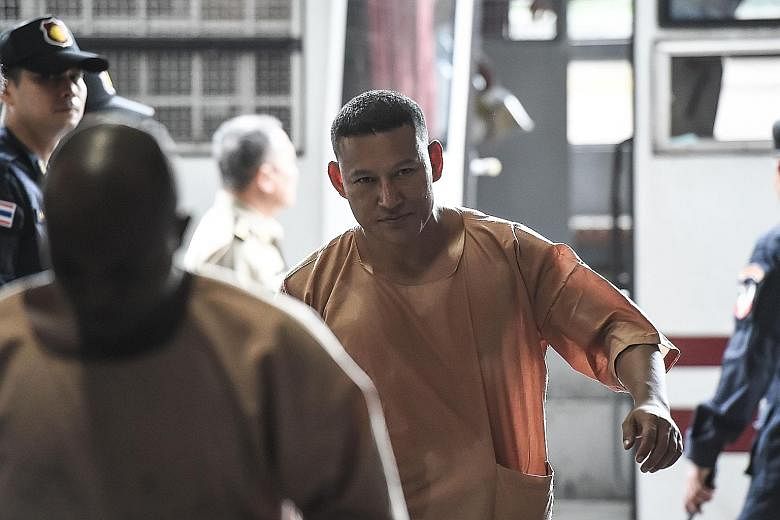BANGKOK • The downfall of "Mr X", the millionaire long shielded by cash and contacts in Laos, has highlighted the role of the secretive, communist country in showering pills across South-east Asia.
Allegedly a key figure among gangs buying drugs from Myanmar's methamphetamine labs, Laotian Xaysana Keopimpha - dubbed "Mr X" - is said to have used his country to shuttle narcotics south, first through Thailand, then into Malaysia.
The 42-year-old was arrested by Thai police on Jan 19 at Bangkok's main airport en route to Laos, where he revelled in a lifestyle of celebrity parties and supercars.
He denies charges of drug possession and smuggling.
But subsequent police operations have turned up several more men accused of running drugs through Laos, an opaque country whose role in the regional narcotics trade is gradually emerging.
They are the suspected middlemen of the "Golden Triangle", shifting pills, Ice and heroin from the world's second-largest drug producing zone to a regional market.
At US$8 (S$11) a pop in Thailand, the best yaba pills - highly addictive caffeine-laced meth pills known also as crazy medicine - rise in price the further they move from source, bringing extraordinary rewards to the traffickers.
Stamped with a "WY", the pink and green pills of the Myanmar drug labs are supercharging everyone from Malaysian farm hands to Bangkok's party crowd.
Each year, regional seizures break records, according to the United Nation's crime agency. That points to better law enforcement, it says, but it also shows the cartels can ramp up output at will to cover losses.
The highest-quality pills (15-20 per cent meth purity) come from the factories of the North and South Wa - armed ethnic groups marshalling a self-governing state on the Myanmar-China border - and by the Lahu hill tribe.
Thailand is being hit hard by the trade. Official data shows that the kingdom has around 1.3 million addicts, with drug convictions accounting for the bulk of its prison population of 290,000 - the 10th highest incarceration rate in the world.
Last year, Thai cops seized nearly 300kg of crystal meth in the far south. It led them to Thai-based Malaysian Tun Hung Seong, nicknamed "The Malaysian Iceman", who allegedly headed a network running Ice and turning huge drug profits into legitimate businesses.
The drug money was laundered through a series of businesses, according to Thai cops, including karaoke bars, restaurants, hotels and bars which circulated up to one billion baht (S$40 million) in narco-profits at any one time.
Police are still hunting a fourth group led by Usman Salameang, a Thai believed to be holed up in Laos, wanted for moving gear through Thailand's violent border area into Malaysia.
Questions remain over how high-profile suspects could have operated beyond the law for so long.
One reason for that impunity is their aversion to publicity and violence - in contrast to their Latin American peers - said a Western drug enforcement official.
They live by a maxim: "Don't bring attention to your operations. You work in silence, you work in the dark."
AGENCE FRANCE-PRESSE

